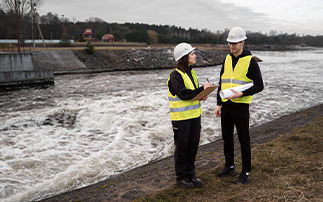Framework for Creating an Economic Development Strategy and Action Plan

What is an Economic Development Strategy and Action Plan?
An Economic Development Strategy and Action Plan is a comprehensive framework that outlines a community’s vision for economic growth and the steps required to achieve it. It integrates a thorough analysis of the local economy, strategic goals, and specific actions to foster economic vitality. The plan serves as a blueprint for policymakers, businesses, and community members, guiding efforts to create a thriving economic environment.
Importance of an Economic Development Plan for Any Region or Community
The significance of an economic development plan cannot be overstated. It provides a structured approach to economic growth, ensuring that resources are used effectively and efficiently. By following these steps, communities can develop a comprehensive strategy that harnesses local assets, fosters innovation and creates a vibrant and sustainable economy for the future. Key benefits include:
- Guided Growth: A clear strategy directs resources and efforts toward priority areas, ensuring coordinated and focused development.
- Increased Competitiveness: By identifying and leveraging competitive advantages, communities can attract investment, businesses, and talent.
- Improved Quality of Life: Economic growth leads to job creation, higher incomes, and enhanced public services, which contribute to residents’ overall well-being.
- Resilience: A well-crafted plan helps communities adapt to economic changes and unforeseen challenges, ensuring long-term stability and growth.
Steps to Develop an Economic Development Strategy and Action Plan
Creating an effective economic development strategy involves several critical steps:
1. Assessment and Analysis
We begin by evaluating the current economic situation to understand the local economic landscape. Gather data on employment, industry trends, infrastructure, and other key factors. This foundational step ensures that the strategy is based on a clear understanding of existing conditions and potential areas for growth.
2. Vision and Goals
Establish a clear vision for the community’s economic future. This vision should reflect the aspirations of the community and provide a long-term perspective. From this vision, set specific, measurable, achievable, relevant, and time-bound (SMART) goals that align with community interests and address identified needs and opportunities.
3. Stakeholder Engagement
Engage a diverse range of stakeholders, including local government, businesses, educational institutions, and community organizations. This inclusive approach ensures that the strategy reflects the interests and insights of those who will be affected by and contribute to economic development. Stakeholder engagement fosters collaboration, builds consensus, and enhances the plan’s legitimacy and support.
4. Target Industries and Sectors
Identify key industries and sectors that offer growth potential and align with the community’s strengths and competitive advantages. Prioritize industries that can drive economic diversification, innovation, and high-quality job creation. This targeted approach helps focus resources on sectors that can yield the highest returns.
5. Strategic Initiatives and Programs
Develop specific initiatives and programs to support the identified industries and achieve the set goals. These may include business retention and expansion programs, support for entrepreneurship and innovation, workforce development initiatives, and infrastructure improvements. Each initiative should have clear objectives, actions, and expected outcomes.
6. Implementation Plan
Create a detailed implementation plan that outlines the specific actions required to execute the strategy. This plan should include timelines, responsible parties, required resources, and performance metrics to track progress. A well-defined implementation plan ensures accountability and facilitates the effective execution of the strategy.
7. Monitoring and Evaluation
Establish mechanisms to monitor progress, solicit feedback, and assess the effectiveness of the initiatives. Regular evaluation helps identify successes, challenges, and areas for improvement, allowing for adjustments to keep the strategy on track. Ongoing monitoring and evaluation are essential for sustaining momentum and achieving long-term goals.
How will Asset Strategy Inc. Help in the Economic Development Strategy and Action Plan?
At Asset Strategy Inc., we bring a wealth of expertise and advanced analytical tools to help communities craft and execute effective economic development strategies. Our team begins by conducting a thorough assessment of the local economy, identifying key economic drivers and areas ripe for growth, and laying a solid foundation for strategic planning.
Wrapping it up
Creating a solid Economic Development Strategy and Action Plan is key to fostering sustainable growth and improving the quality of life in your community. At Asset Strategy Inc., we’re here to help you every step of the way, from planning to execution.
Experts in Municipal Decarbonization and Energy Reduction Strategies
The push for sustainability has never been more critical, especially for municipalities seeking to lower their carbon footprint…
Watershed Assessment and Management Plans: A Comprehensive Guidet Management Plans?
A watershed is more than just a geographical feature. It represents a critical component of the hydrological cycle, where all the wate…
How Asset Strategy Develops Urban Forest Management Plans
Urban forests are vital to city ecosystems, offering numerous ecological, social, and economic benefits. They improve air quality, provide shade, enhance…


